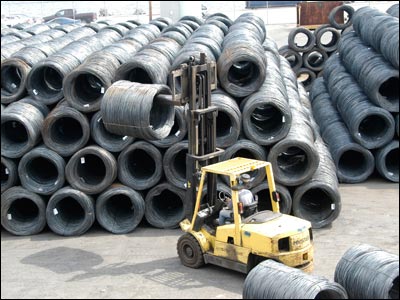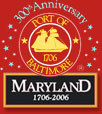
|
Think about it this way … Seesaws use a fulcrum point (the point where the seesaw meets its support) to balance their load. People can balance the seesaw by having equal weight on both ends of the seesaw or by adjusting the fulcrum point, sliding it toward the side that weighs less. How does this principle apply to the working cranes at the port? |
||
 |
In the beginning …
Cranes can lift weights that would be impossible for humans. It is believed the Greeks invented the crane in the sixth century BC, because of evidence found in the stones used to build Greek temples. These early cranes relied on human or animal power.
Bio-Diesel is the Way to Go …
Between November and December of 2006, the Maryland Port Administration weaned its fleet of more than 300 vehicles and equipment from low-sulfur diesel fuel, and began using a unique blend of ultra-low sulfur diesel fuel and bio-diesel fuel. This special mixture burns more cleanly and releases fewer particulates into the air.
Machinery at the Port
Mechanics and Science Help Port Efficiency
Mechanical and structural systems and their applications play a major role at the Port. Moving goods requires a knowledge of scientific principles of force, motion, center of gravity, and power - just to name a few - and ways to apply these principles to efficiently move cargo from place to place. If people had to use only human strength to move all this cargo,the process of transporting these goods would slow to a standstill.
Thanks to technology and a working knowledge of scientific principles, workers at the Port of Baltimore complete their tasks quickly and efficiently.
Ships today are larger than ever. In order to handle the cargo these ships carry, the Port must have the right equipment. (These larger ships are called post-Panamax, because they were built after the Panamax ships, or ships that could fit through the original Panama Canal. Post-Panamax ships cannot fit through the Canal.) For example, Seagirt Marine Terminal has seven 100-foot gauge Post-Panamax cranes, which are over 20 stories high. Three of these seven cranes are capable of hoisting two containers at once, reducing loading and unloading time significantly.
Speaking of cranes, the biggest of the bunch at the Port is called Big Red. Big Red is a portable Manitowoc M250T, with a boom length that can extend 170 feet to lift 300 tons of cargo at one time. Counterweights must be used to balance the weight of the cargo the crane is lifting. Even the ground around Big Red’s feet (called outriggers) has to be shored up with “matting,” twelve-by-twelve inch timbers.
Gantry cranes, or cranes that are able to pick up cargo and then move it along its tracks to another location are also used in the Port. For example, a gantry crane can straddle a ship that is being constructed and load in the ship’s motor. The Port’s gantry cranes are much larger versions of the cranes used in some garages to hoist engines in and out of cars.
Although some of the equipment used at the Port is so huge as to be visible from far away, the Port also depends on teeny, tiny microchips to keep everything running smoothly.
Seagirt Marine Terminal uses an automated computer system that makes it easy to keep track of all the trailers entering the Port. Whenever trucks enter Seagirt, an electronic sign-bridge over 13 of the 14 inbound lanes directs the drivers to the appropriate lane, where a remote intercom system allows them to quickly exchange information with clerks in the gate house and then quickly continue on their way.




